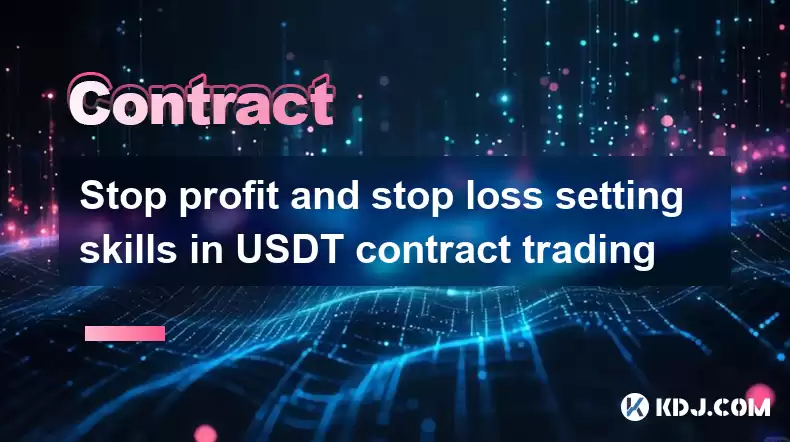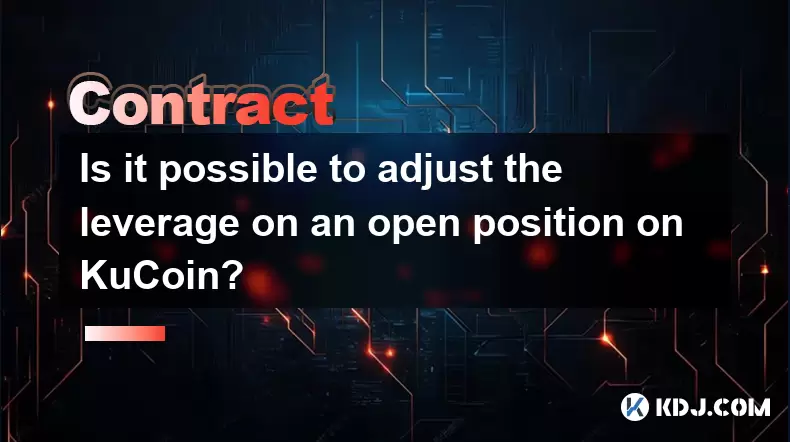-
 Bitcoin
Bitcoin $116400
-0.36% -
 Ethereum
Ethereum $4033
3.40% -
 XRP
XRP $3.302
-1.26% -
 Tether USDt
Tether USDt $1.000
-0.02% -
 BNB
BNB $796.1
1.67% -
 Solana
Solana $177.8
1.89% -
 USDC
USDC $0.9999
0.00% -
 Dogecoin
Dogecoin $0.2314
4.09% -
 TRON
TRON $0.3381
0.14% -
 Cardano
Cardano $0.7989
1.22% -
 Stellar
Stellar $0.4496
-1.84% -
 Chainlink
Chainlink $20.42
9.42% -
 Hyperliquid
Hyperliquid $41.17
0.88% -
 Sui
Sui $3.914
3.77% -
 Bitcoin Cash
Bitcoin Cash $584.7
1.52% -
 Hedera
Hedera $0.2632
-0.54% -
 Avalanche
Avalanche $24.09
3.40% -
 Ethena USDe
Ethena USDe $1.001
-0.02% -
 Litecoin
Litecoin $123.2
1.33% -
 Toncoin
Toncoin $3.318
-0.04% -
 UNUS SED LEO
UNUS SED LEO $8.984
-0.05% -
 Shiba Inu
Shiba Inu $0.00001323
2.85% -
 Uniswap
Uniswap $10.90
4.41% -
 Polkadot
Polkadot $3.999
3.34% -
 Dai
Dai $1.000
0.01% -
 Cronos
Cronos $0.1630
9.64% -
 Bitget Token
Bitget Token $4.484
0.82% -
 Monero
Monero $272.4
2.44% -
 Pepe
Pepe $0.00001173
6.03% -
 Aave
Aave $290.8
2.88%
Stop profit and stop loss setting skills in USDT contract trading
USDT contract trading demands effective risk management. Stop-loss and take-profit orders, adjustable via strategies like trailing stops and dynamic placement, automate profit securing and loss limitation, mitigating slippage and volatility's impact.
Mar 10, 2025 at 02:10 pm

Key Points:
- Understanding the importance of stop-loss and take-profit orders in mitigating risk and securing profits in USDT contract trading.
- Defining stop-loss and take-profit orders and their functions within the context of volatile cryptocurrency markets.
- Exploring various strategies for setting effective stop-loss and take-profit levels, considering factors like volatility, market trends, and risk tolerance.
- Examining the impact of slippage and other market conditions on stop-loss and take-profit order execution.
- Discussing advanced techniques like trailing stop-losses and dynamic order placement to optimize profit potential and minimize losses.
Stop Profit and Stop Loss Setting Skills in USDT Contract Trading
USDT-margined contracts offer leveraged exposure to cryptocurrencies, amplifying both potential profits and losses. Effective risk management is paramount. Stop-loss and take-profit orders are crucial tools in this regard, helping traders protect their capital and secure gains.
Understanding Stop-Loss and Take-Profit Orders
A stop-loss order automatically sells your contract position when the price drops to a predetermined level, limiting potential losses. Conversely, a take-profit order automatically closes your position when the price reaches a specified target, securing your profits. These orders help automate your trading strategy, removing emotional decision-making during market fluctuations.
Setting Effective Stop-Loss Levels
Determining the appropriate stop-loss level requires careful consideration. One common approach is to base it on recent price support levels or technical indicators like moving averages. Another method involves setting it a percentage below your entry price, representing your risk tolerance. For instance, a 5% stop-loss means your position will be liquidated if the price drops 5% from your entry point. Always account for market volatility; higher volatility necessitates wider stop-loss levels.
Setting Effective Take-Profit Levels
Choosing the right take-profit level is equally crucial. Traders often employ technical analysis, identifying resistance levels or Fibonacci retracement levels as potential targets. Alternatively, a percentage-based approach can be used, for example, aiming for a 10% or 20% profit. However, relying solely on these targets can be risky. Consider the broader market context and adjust your take-profit level accordingly.
Strategies for Setting Stop-Loss and Take-Profit Orders
Several strategies can be implemented for setting these orders effectively:
- Fixed Stop-Loss and Take-Profit: This simple approach involves setting static levels based on your analysis.
- Trailing Stop-Loss: This dynamic approach adjusts the stop-loss level as the price moves in your favor, locking in profits while minimizing potential losses.
- Dynamic Order Placement: This strategy involves adjusting stop-loss and take-profit levels based on real-time market conditions and price action.
Impact of Slippage and Market Conditions
Slippage, the difference between the expected execution price and the actual execution price, can affect stop-loss and take-profit order execution. High volatility and low liquidity can exacerbate slippage. Consider this factor when setting your orders, potentially widening the stop-loss level to account for potential slippage. Market gaps, where the price jumps significantly, can also cause your stop-loss to be triggered at a less favorable price.
Advanced Techniques
- Pyramiding: Gradually increasing your position size as the price moves in your favor. Requires careful risk management.
- Averaging Down: Buying more of the asset at lower prices to reduce your average entry cost. Requires careful capital management.
- Using Multiple Stop-Loss and Take-Profit Orders: Setting multiple orders at different price levels to secure profits at various points or to protect against unexpected market moves.
Using Technical Indicators
Integrating technical indicators like Relative Strength Index (RSI), Moving Average Convergence Divergence (MACD), and Bollinger Bands can enhance your stop-loss and take-profit strategies. These indicators provide insights into market momentum and potential reversals, helping you set more informed levels. However, remember that indicators are not foolproof and should be used in conjunction with other analysis methods.
Risk Management Considerations
Always remember that no strategy guarantees profit. Proper risk management is essential. Never risk more capital than you can afford to lose. Diversify your portfolio and avoid over-leveraging your positions. Regularly review and adjust your stop-loss and take-profit levels based on market conditions and your trading performance.
Frequently Asked Questions:
Q: What is the best way to set a stop-loss order?
A: There's no single "best" way. It depends on your risk tolerance, trading style, and the specific asset. Common approaches include percentage-based stop losses (e.g., 5% below entry price), support level-based stop losses, or using technical indicators to identify potential reversal points.
Q: How do I avoid slippage with stop-loss orders?
A: Slippage is unavoidable entirely, but you can mitigate it by using wider stop-loss orders, trading during periods of high liquidity, and avoiding highly volatile markets.
Q: Should I always use both stop-loss and take-profit orders?
A: While not mandatory, using both is a highly recommended risk management practice. It helps automate your trading strategy and protect against both losses and missed profit opportunities.
Q: What are the risks of using trailing stop-losses?
A: Trailing stop-losses can be effective, but they can also lead to prematurely closed positions if the price fluctuates significantly. The trailing distance needs careful consideration.
Q: Can I use stop-loss orders on all cryptocurrency exchanges?
A: Most reputable cryptocurrency exchanges offer stop-loss orders, but features and functionalities can vary. Check your exchange's documentation to ensure you understand how they work.
Disclaimer:info@kdj.com
The information provided is not trading advice. kdj.com does not assume any responsibility for any investments made based on the information provided in this article. Cryptocurrencies are highly volatile and it is highly recommended that you invest with caution after thorough research!
If you believe that the content used on this website infringes your copyright, please contact us immediately (info@kdj.com) and we will delete it promptly.
- Shiba Inu (SHIB) in the Crypto Landscape: Community, Trends, and Future Outlook
- 2025-08-09 20:30:12
- Lasers in Modern Warfare: Iron Beam and the Future of Defense
- 2025-08-09 20:30:12
- Maxi Doge Presale: The Meme Coin That's Pumping Iron and Prices!
- 2025-08-09 19:10:11
- Rare Coin Warning: Don't Get Fooled by That 1p Coin!
- 2025-08-09 18:50:12
- Cardano, Unilabs, and Tron Price: Decoding the Latest Crypto Buzz
- 2025-08-09 18:30:12
- Aerodrome Finance: Price Targets and the Bullish Channel - What's Next?
- 2025-08-09 18:50:12
Related knowledge

Is it possible to adjust the leverage on an open position on KuCoin?
Aug 09,2025 at 08:21pm
Understanding Leverage in KuCoin Futures TradingLeverage in KuCoin Futures allows traders to amplify their exposure to price movements by borrowing fu...

What is the difference between realized and unrealized PNL on KuCoin?
Aug 09,2025 at 01:49am
Understanding Realized and Unrealized PNL on KuCoinWhen trading on KuCoin, especially in futures and perpetual contracts, understanding the distinctio...

How does KuCoin Futures compare against Binance Futures in terms of features?
Aug 09,2025 at 03:22am
Trading Interface and User ExperienceThe trading interface is a critical component when comparing KuCoin Futures and Binance Futures, as it directly i...

How do funding fees on KuCoin Futures affect my overall profit?
Aug 09,2025 at 08:22am
Understanding Funding Fees on KuCoin FuturesFunding fees on KuCoin Futures are periodic payments exchanged between long and short position holders to ...

What is the distinction between mark price and last price on KuCoin?
Aug 08,2025 at 01:58pm
Understanding the Basics of Price in Cryptocurrency TradingIn cryptocurrency exchanges like KuCoin, two key price indicators frequently appear on trad...

What are the specific maker and taker fees on KuCoin Futures?
Aug 08,2025 at 08:28am
Understanding Maker and Taker Fees on KuCoin FuturesWhen trading on KuCoin Futures, users encounter two primary types of fees: maker fees and taker fe...

Is it possible to adjust the leverage on an open position on KuCoin?
Aug 09,2025 at 08:21pm
Understanding Leverage in KuCoin Futures TradingLeverage in KuCoin Futures allows traders to amplify their exposure to price movements by borrowing fu...

What is the difference between realized and unrealized PNL on KuCoin?
Aug 09,2025 at 01:49am
Understanding Realized and Unrealized PNL on KuCoinWhen trading on KuCoin, especially in futures and perpetual contracts, understanding the distinctio...

How does KuCoin Futures compare against Binance Futures in terms of features?
Aug 09,2025 at 03:22am
Trading Interface and User ExperienceThe trading interface is a critical component when comparing KuCoin Futures and Binance Futures, as it directly i...

How do funding fees on KuCoin Futures affect my overall profit?
Aug 09,2025 at 08:22am
Understanding Funding Fees on KuCoin FuturesFunding fees on KuCoin Futures are periodic payments exchanged between long and short position holders to ...

What is the distinction between mark price and last price on KuCoin?
Aug 08,2025 at 01:58pm
Understanding the Basics of Price in Cryptocurrency TradingIn cryptocurrency exchanges like KuCoin, two key price indicators frequently appear on trad...

What are the specific maker and taker fees on KuCoin Futures?
Aug 08,2025 at 08:28am
Understanding Maker and Taker Fees on KuCoin FuturesWhen trading on KuCoin Futures, users encounter two primary types of fees: maker fees and taker fe...
See all articles

























































































